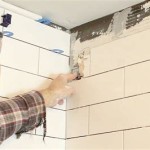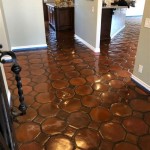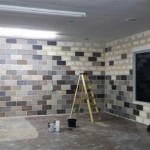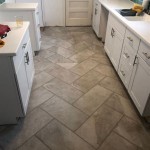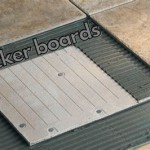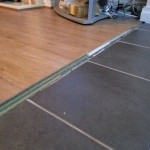The Enduring Beauty of Wood Porcelain Tile Flooring in Bathroom Ideas
The bathroom, a sanctuary of personal hygiene and relaxation, has evolved significantly in design and functionality. Material selection plays a crucial role in achieving both aesthetic appeal and practical performance within this high-moisture environment. While natural wood might seem like an unsuitable choice due to its susceptibility to water damage, wood-look porcelain tile offers a compelling alternative. This innovative material combines the visual warmth and texture of wood with the durability and water resistance of porcelain. This article explores the advantages and applications of wood porcelain tile flooring in bathroom designs.
Wood porcelain tile is crafted to meticulously replicate the appearance of various wood species, including oak, maple, walnut, and even exotic hardwoods. Advances in printing technology allow manufacturers to accurately capture the grain patterns, knots, and color variations inherent in natural wood. The tiles are available in a wide range of sizes, from traditional planks to wider formats, and can be installed in patterns that mimic actual wood flooring, such as herringbone, chevron, or a simple staggered layout. This versatility enables homeowners to create a customized look that complements their overall bathroom aesthetic.
Water Resistance and Durability: Key Advantages
One of the primary reasons wood porcelain tile has gained popularity in bathrooms is its exceptional water resistance. Unlike natural wood, porcelain is impervious to water, preventing warping, swelling, and rot. This inherent property makes it an ideal choice for areas prone to spills, splashes, and high humidity levels, such as bathrooms. Furthermore, porcelain tile is highly resistant to staining, scratching, and fading, ensuring its longevity and maintaining its pristine appearance for years to come, even with regular use and cleaning.
The durability of porcelain tile is another significant advantage. Porcelain is a dense and hard material that can withstand heavy foot traffic and resist chipping or cracking. This is particularly important in bathrooms, where dropped items and frequent cleaning can put stress on the flooring. With proper installation and maintenance, wood porcelain tile flooring can last for decades, providing a durable and aesthetically pleasing surface.
In contrast to natural wood, which requires specific cleaning products and regular sealing to protect it from moisture damage, wood porcelain tile is relatively low-maintenance. Regular sweeping or vacuuming to remove debris, followed by mopping with a mild detergent, is typically sufficient to keep the floor clean and looking its best. The non-porous surface of porcelain prevents the absorption of dirt and grime, making it easy to maintain a hygienic bathroom environment.
Aesthetic Versatility: Design Possibilities
The aesthetic versatility of wood porcelain tile allows for a wide range of design possibilities in the bathroom. The tiles can be used to create a variety of styles, from rustic and traditional to modern and minimalist. Lighter wood tones, such as maple or birch, can brighten up a small bathroom and create a sense of spaciousness. Darker wood tones, such as walnut or mahogany, can add warmth and sophistication to a larger bathroom. The choice of grout color also plays a significant role in the overall look. A contrasting grout color can accentuate the plank pattern, while a matching grout color can create a more seamless appearance.
Wood porcelain tile can be combined with other materials to create visually appealing and functional bathroom designs. For example, pairing wood-look flooring with white subway tiles on the walls can create a classic and timeless look. Incorporating natural stone accents, such as marble or granite, can add a touch of luxury. The warm tones of the wood tile can also complement the cool tones of stainless steel fixtures and glass shower enclosures.
Beyond flooring, wood porcelain tile can be used on bathroom walls, creating a unique and eye-catching feature. Installing wood-look tile in a shower niche or as a backsplash behind the vanity can add texture and visual interest. In some cases, wood porcelain tile can even be used to clad a freestanding bathtub, creating a spa-like atmosphere.
The patterns in which the tile are laid also contribute to the overall aesthetic. A herringbone pattern, for example, adds a touch of elegance and sophistication, while a staggered pattern creates a more casual and relaxed feel. The size and shape of the tiles can also be varied to create a custom look. Using wider planks can create a more modern appearance, while using narrower planks can evoke a more traditional feel.
Cost Considerations and Installation
The cost of wood porcelain tile can vary depending on the quality, size, and design of the tile. While it may be more expensive than some other flooring options, such as vinyl or laminate, it is generally less expensive than natural wood. Furthermore, the long lifespan and low maintenance requirements of porcelain tile can offset the initial cost over time. When budgeting for a bathroom renovation, it is important to consider the cost of both the tile and the installation.
Proper installation is crucial to ensure the longevity and performance of wood porcelain tile flooring. It is recommended to hire a professional tile installer who has experience working with porcelain tile. The installer will prepare the subfloor, ensuring that it is level and clean. They will also use the appropriate adhesive and grout to ensure a watertight and durable installation. It is important to follow the manufacturer's recommendations for installation and maintenance to avoid any problems in the future.
Before installation, it's vital to plan the layout of the tiles carefully. Consider the size and shape of the bathroom and the desired pattern. Laying out the tiles beforehand can help to avoid awkward cuts or uneven spacing. It is also important to ensure that the tiles are properly aligned and that the grout lines are consistent. This will contribute to a professional and aesthetically pleasing finished product.
Underfloor heating is a popular addition to bathrooms, providing warmth and comfort underfoot. Wood porcelain tile is compatible with underfloor heating systems, making it an ideal choice for creating a luxurious and inviting bathroom environment. When installing underfloor heating, it is important to follow the manufacturer's instructions and to use a suitable adhesive that is compatible with both the tile and the heating system.
The environmental benefits of wood porcelain tile should also be considered. As a manufactured product, porcelain tile does not contribute to deforestation. Many manufacturers also use recycled materials in the production of their tiles, further reducing their environmental impact. Additionally, the long lifespan of porcelain tile means that it will not need to be replaced as frequently as other flooring options, reducing waste and conserving resources.
In conclusion, wood porcelain tile flooring offers a compelling combination of aesthetic appeal, durability, and water resistance, making it an excellent choice for bathroom applications. Its versatility allows for a wide range of design possibilities, from rustic to modern, while its low maintenance requirements make it a practical and cost-effective solution. When properly installed and maintained, wood porcelain tile flooring can enhance the beauty and functionality of any bathroom for many years to come.

5 Irresistible Wood Look Porcelain Tile Doppelgangers

15 Bathrooms That Have Been Transformed With Wood Tile

15 Bathrooms That Have Been Transformed With Wood Tile

Can You Have Wood Flooring In Bathrooms Havwoods Us

15 Bathrooms That Have Been Transformed With Wood Tile

Bathroom Flooring Ideas Carpet One Floor Home

15 Bathrooms That Have Been Transformed With Wood Tile

Bathroom Flooring Ideas The Home Depot

Herringbone Flooring Dare To Be Diffe Stone Tile Depot

Bathroom Flooring Ideas Carpet One Floor Home
Related Posts

